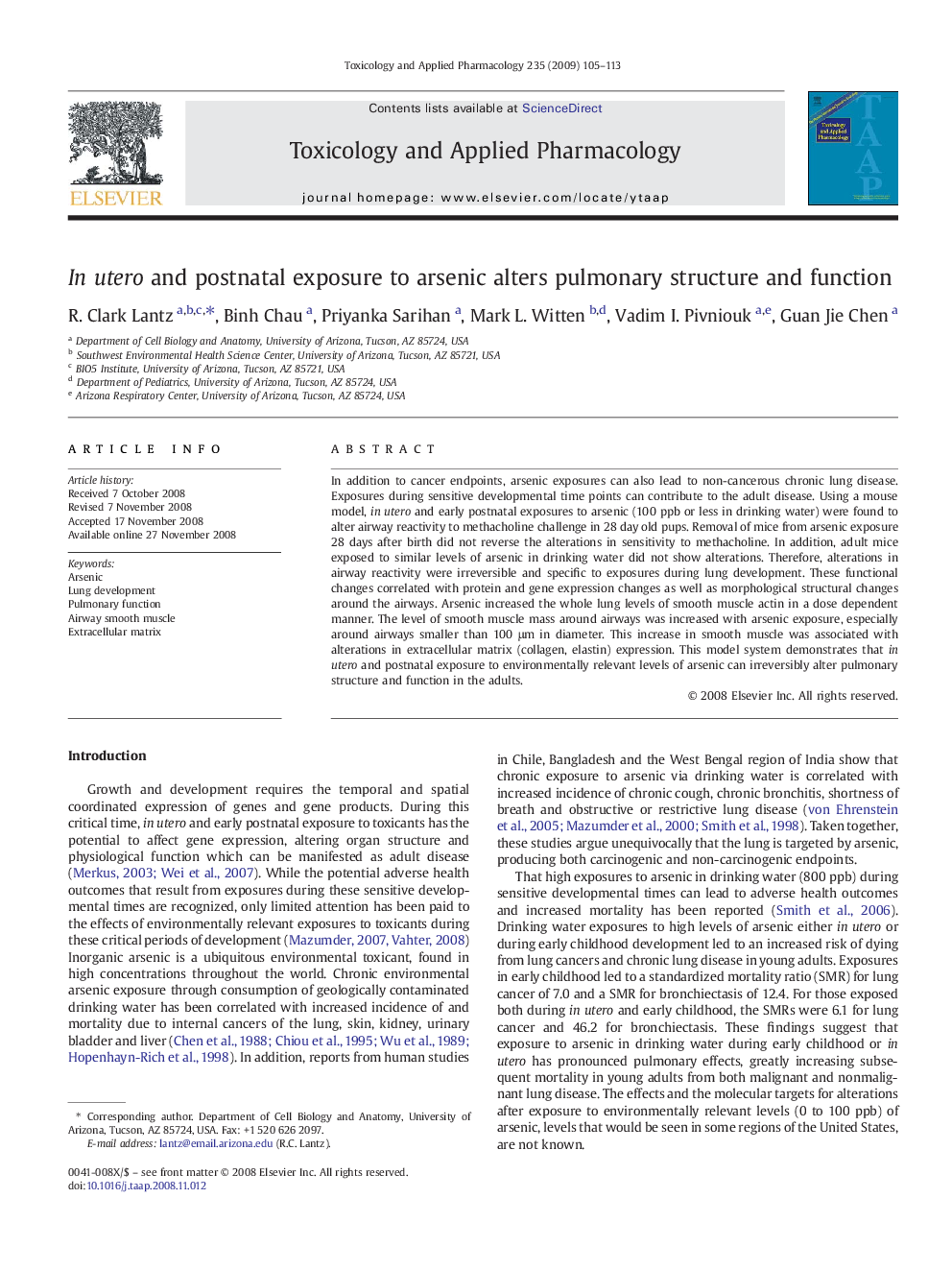| Article ID | Journal | Published Year | Pages | File Type |
|---|---|---|---|---|
| 2570156 | Toxicology and Applied Pharmacology | 2009 | 9 Pages |
In addition to cancer endpoints, arsenic exposures can also lead to non-cancerous chronic lung disease. Exposures during sensitive developmental time points can contribute to the adult disease. Using a mouse model, in utero and early postnatal exposures to arsenic (100 ppb or less in drinking water) were found to alter airway reactivity to methacholine challenge in 28 day old pups. Removal of mice from arsenic exposure 28 days after birth did not reverse the alterations in sensitivity to methacholine. In addition, adult mice exposed to similar levels of arsenic in drinking water did not show alterations. Therefore, alterations in airway reactivity were irreversible and specific to exposures during lung development. These functional changes correlated with protein and gene expression changes as well as morphological structural changes around the airways. Arsenic increased the whole lung levels of smooth muscle actin in a dose dependent manner. The level of smooth muscle mass around airways was increased with arsenic exposure, especially around airways smaller than 100 μm in diameter. This increase in smooth muscle was associated with alterations in extracellular matrix (collagen, elastin) expression. This model system demonstrates that in utero and postnatal exposure to environmentally relevant levels of arsenic can irreversibly alter pulmonary structure and function in the adults.
